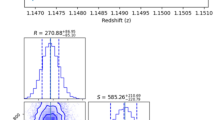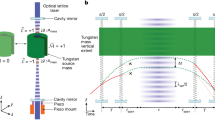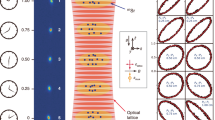Abstract
IT is generally believed that the general theory of relativity is a theory of gravitation which treats only the case for which the Newtonian attraction between particles m 1, m 2 at a distance d apart is γm 1 m 2/d 2, where γ is a constant, and that the case when γ is replaced by a variable quantity γ′ is beyond the scope of the theory. I do not believe that this is the case, and in the following argument I endeavour to show that the general theory of relativity can, in fact, treat the case when γ′ is a slowly varying function of the time, of the type found in Dirac's cosmology1.
Similar content being viewed by others
Article PDF
References
Dirac, P. A. M., Proc. Roy. Soc., A, 165, 199 (1938).
McCrea, W. H., and Milne, E. A., Quart. J. Math. (Oxford), 5, 73 (1934).
Author information
Authors and Affiliations
Rights and permissions
About this article
Cite this article
GILBERT, C. The General Theory of Relativity and Newton's Law of Gravitation. Nature 179, 270 (1957). https://doi.org/10.1038/179270a0
Issue date:
DOI: https://doi.org/10.1038/179270a0



